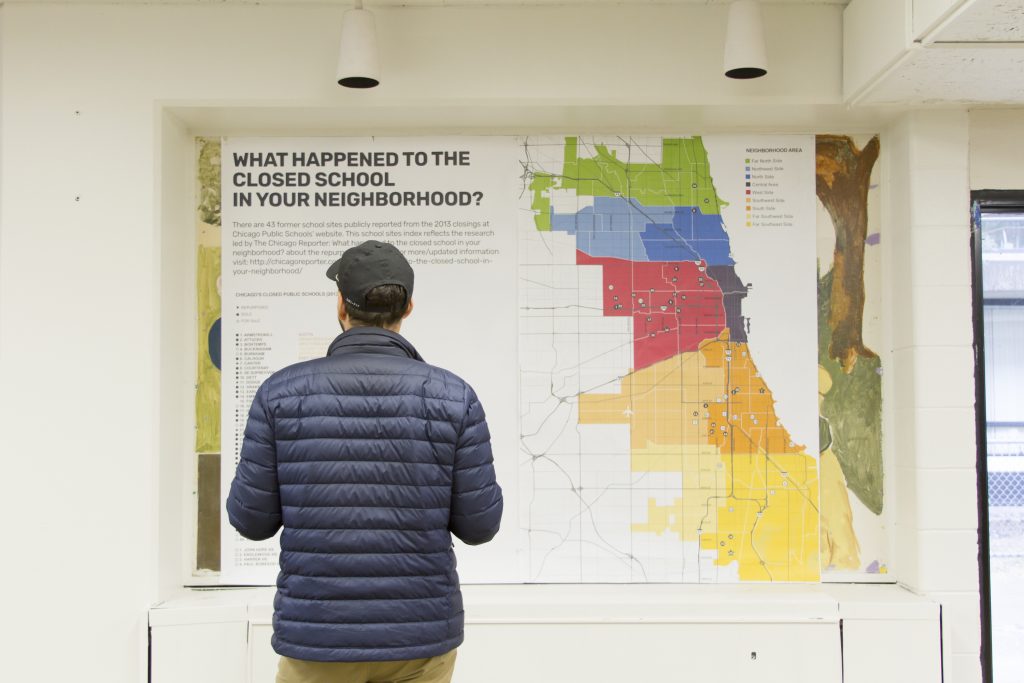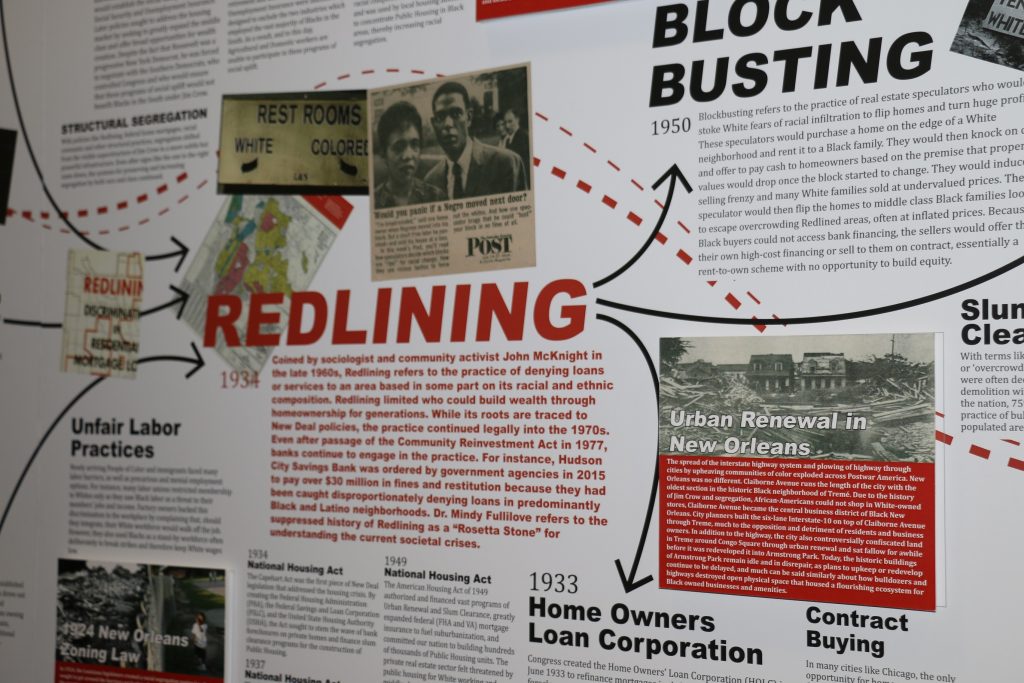
Proposed changes to federal regulations in community development and lending are an assault on decades of work in fighting the impacts of racial segregation, discriminatory and race-based investment practices, increased risks from pollution and climate change, and unchecked government power in approving projects. The threats are real and they are coming fast.
Partners in the Strong, Prosperous, And Resilient Communities Challenge (SPARCC) are joining other advocates in community development, housing, racial and social justice, equitable investment, environmental justice and public health to oppose the proposed changes to the Community Reinvestment Act (CRA), Affirmatively Furthering Fair Housing (AFFH), and the National Environmental Policy Act (NEPA).
Combined, these three rule changes challenge a housing and community development agenda that leads to better health, greater availability of fair, affordable and sustainable housing, and greater community power in driving decisions about the types of investments we want to see in our communities.
Deadlines for public comments that could help stop the changes begin as soon as March 10. (See below for links to templates and submission sites.)
“Housing and transportation are inseparable, and the cumulative impact of these shifts to policies such as NEPA, CRA, and AFFH further stifle the voice of community,” says Deya Zavala, executive director of Mile High Connects in Denver and a SPARCC partner. “These changes exacerbate the challenges we face as a region, when we should be actively working toward solutions.”
Changes proposed by the Administration would:
- Allow communities’ segregated housing patterns to go unchecked
- Dilute policies aimed at protecting against racial discrimination in housing
- Weaken policies addressing inequities in lending and investment
- Remove safeguards against increased pollution and health and safety impacts, especially in low-income neighborhoods and communities of color
- Limit public participation when community voices are needed most
- Create exclusions in the environmental review process, giving some developers and contractors a pass
How does the Affirmatively Affirming Fair Housing (AFFH) rule advance housing justice?
The Fair Housing Act of 1968 prohibited discrimination and required the Department of Housing and Urban Development and its grantees to actively address segregation and to foster inclusive communities, also known as the duty to affirmatively further fair housing (AFFH). For decades, there were no regulations as to how HUD and its grantees should implement this legal requirement, and many communities’ segregated housing patterns continued. In 2015, after a lengthy process collecting input from a broad set of stakeholders, HUD adopted the long-awaited AFFH rule, which provided a community-centered process to analyzing barriers to fair housing and identifying goals to fostering more inclusive communities. The rule required communities to have access to data that revealed patterns often not analyzed from a racial equity framework.

HUD is now proposing a new process that lacks transparency, detailed analysis or local accountability. It effectively ignores the impact of segregation, increases the risk of racial discrimination and removes requirements for community participation in fair housing development. In addition, the new rule reduces the importance and need for energy efficiency and water standards which can create more sustainable housing and help drive down the cost of housing. It also casts critical “wetland and environmental” protections as “unduly burdensome,” yet those regulations are critical to ensuring both the protection of sensitive habitat and keeping families safe from potential and repeated flood risk.
As a result, the changes threaten to undo years of work to address residential segregation. They significantly reduce quantitative analysis of fair housing needs by jurisdictions receiving federal housing funds, fail to include adequate community engagement, and do little to ensure accurate reporting or action is taken by a jurisdiction to further fair housing.
“Affordable, accessible, and secure housing is a foundational element of good health,” says Robyn Bussey of the Atlanta Regional Collaborative for Health Improvement (ARCHI). “Any barrier to quality housing further widens the health equity gaps that continue to persist for Black people and people of color. These proposed regulatory changes would be a setback for those fighting to maintain their homes and stay in the communities they’ve lived in for generations, and they worsen the tenuous housing affordability efforts and gains we’ve made in Atlanta.”
To weigh in before the March 16 deadline, click here. For draft language in submitting comments, click here.
How does the Community Reinvestment Act (CRA) Support Equitable Investment in Communities?
This more than 40-year-old law grew out of the civil rights movement to ban the once-common practice of “redlining” – literally the drawing of lines on maps to exclude lending for buying homes and building small businesses in certain communities, mostly those populated by African-Americans, immigrants, the working class and low-income people. Redlining has had long-lasting and devastating consequences for millions of American families who could not access the American Dream of expanding prosperity and opportunity over time. The CRA has meant billons in investments flowing to those communities.

Under the administration’s proposal, CRA’s emphasis on responsiveness to local needs and priorities would instead be replaced by evaluating how much money a bank invests in a community. However, total dollars do not equate to positive impact in communities. This new evaluation process threatens to remove the community’s voice from CRA and shift bank activities to less positively impactful investments.
“While the CRA needs to do much more to alleviate the burdens of uneven development from a social or environmental standpoint, these proposed changes would worsen an already difficult situation leaving more families with few options but to live in environments vulnerable to disaster and that threaten their health through higher exposure to toxins and other waste pollutants,” says Khalil Shahyd, a senior project manager at the Natural Resources Defense Council (NRDC). “Not having the benefit of CRA-directed funds would make it more difficult for environmentally focused revitalization of brown fields and other hazardous sites to get funded, again leaving them overburdened by long term exposure.”
To weigh in on the proposal before the April 8 deadline, click here. For draft language in submitting comments, click here.
How does the National Environmental Policy Act (NEPA) protect our health and environment?
The National Environmental Policy Act (NEPA)went into effect in 1970 and requires federal agencies to assess environmental effects before deciding on building federal infrastructure projects. The review process remains a critical federal screening mechanism to ensure that climate, environmental, and community impacts are considered. It also stands as one critical tool that communities have for determining what projects get built and how the construction might impact the community. It also stands as a safeguard for environmental justice in that the reviews are a primary way that the federal government considers the frequently disproportionate impacts that siting large-scale, highly disruptive projects and facilities have on Indigenous people, Black, Latinx, Asian-American, low-income and immigrant populations.
Changes to the NEPA policy would create loopholes that streamline the review process and have potentially devastating effects on people’s health and environment. In effect, the government and developers would have more say so over communities. Limiting community engagement and public input in the NEPA process means communities will have many fewer opportunities to speak for themselves.
“For the last 50 years, the National Environmental Protection Act (NEPA) has protected us and the environment by giving us a voice, and now we must resolve to protect it and safeguard our future,” says Stephanie Gidigbi, Director of Policy and Partnerships for the Natural Resources Defense Council.
To weigh in before the March 10 deadline, click here.
These combined proposed regulatory changes are being decried by community members and national leaders in community development and investment. These changes compound each other, leaving communities with fewer resources to respond to existing environmental harm and oppose further problematic development. Together they represent setbacks in our progress as a nation and do nothing to cure the ills of our communities and crumbling infrastructure. We urge improvements on, not decimation of, the existing rules.